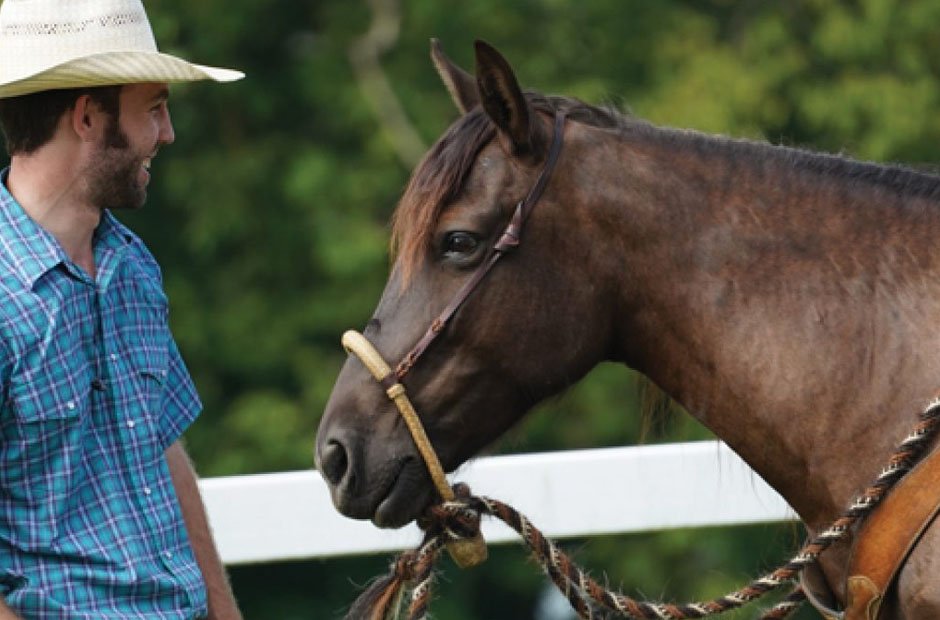There’s nothing more frustrating than dealing with a horse that’s been perfectly fine for months—maybe years—suddenly acting like the world is ending. The horse that used to stand quietly for grooming now dances around. The one that loaded onto the trailer without a second thought suddenly plants their feet at the ramp. When this happens, most owners assume it’s a training problem or just the horse being difficult. But here’s the thing: horses don’t usually develop anxiety out of nowhere, and behavioral changes almost always point to something specific.
The tricky part is figuring out what changed, because sometimes the cause isn’t obvious at all.
Pain Is Usually the First Culprit
Before anything else, physical discomfort needs to be ruled out. Horses are incredibly good at hiding pain until they can’t anymore, and what looks like sudden anxiety is often a pain response. A horse that’s developed ulcers won’t necessarily show the textbook signs—they might just become more reactive, harder to catch, or resistant to things they used to tolerate. Back pain, especially in the saddle area, can turn a calm horse into one that won’t stand for tacking up.
Dental issues are another sneaky cause. A sharp tooth or an abscess doesn’t just make eating uncomfortable—it can make a horse head-shy, resistant to bridling, and generally more tense. Even something like sore feet or early laminitis can manifest as overall nervousness rather than obvious lameness. When a horse is uncomfortable, their tolerance for everything else drops significantly.
Social Dynamics That Went Sideways
Herd changes mess with horses more than people realize. Adding a new horse to the paddock, losing a pasture buddy, or even subtle shifts in the pecking order can create ongoing stress. A horse that’s being bullied away from food or water will show up as anxious and reactive, even when they’re away from their herd. The stress doesn’t just disappear when they’re pulled out for a ride.
Isolation is another massive trigger. Horses that suddenly find themselves stabled alone after being used to constant company often develop anxious behaviors. They might pace, call out, or become impossibly tense when separated from other horses. This isn’t stubbornness—it’s genuine distress from a prey animal that’s wired to feel unsafe alone.
For horses dealing with ongoing stress from their environment or routine changes, supporting their mental state becomes important. Natural options like horse calming supplements can help take the edge off while working through management changes, giving horses the support they need during the transition period.
Environmental and Routine Disruptions
Horses are creatures of habit, and even small changes to their routine can create anxiety. A new feeding schedule, different hay, or a change in turnout times might seem minor, but for some horses these shifts are genuinely stressful. Moving to a new barn is an obvious trigger, but even things like construction near the property or new farm equipment can create ongoing tension.
Weather changes affect horses more than most people acknowledge. Some horses get noticeably more anxious before storms, during high winds, or when barometric pressure drops. This isn’t them being silly—they’re responding to environmental cues that feel threatening on an instinctual level.
Digestive Problems Showing Up as Behavior Issues
Gut health and behavior are more connected than they appear. Hindgut issues, ulcers, or even just a change in feed that’s causing digestive discomfort will often show up as anxiety first. A horse with an upset stomach might become girthy, resistant to work, or just generally more on edge. They can’t explain that their stomach hurts, so it comes out as behavioral changes instead.
Inconsistent feeding times or long gaps between meals can also create stress. Horses are designed to eat almost constantly, and when they’re standing in a stall hungry, the anxiety that creates can carry over into everything else they do that day.
Training Pressure and Confusion
Sometimes the cause is in the work itself. A horse that’s being pushed too hard, asked for something they don’t understand, or dealing with inconsistent handling can develop anxiety around being ridden or worked. This is particularly common when horses change owners or trainers—what looks like sudden nervousness might actually be confusion or stress from different expectations and cues.
Punishment-based training or rough handling, even if it’s not coming from the current owner, can create horses that are constantly waiting for the other shoe to drop. That underlying tension makes them reactive to everything.
How to Actually Figure Out What Changed
Start with the obvious physical stuff. Get the vet out to check for pain, ulcers, or any developing health issues. Have the dentist look at teeth, and consider whether the saddle still fits properly—horses change shape, and an ill-fitting saddle creates ongoing discomfort that looks like anxiety.
Look at what’s changed in the last few weeks or months, even things that seem unrelated. Did the horse move paddocks? Is there a new horse in the barn? Did the hay supplier change? Sometimes the cause is something that happened weeks ago, and the behavior is just now becoming obvious.
Watch the horse’s body language carefully. Are they tense all the time, or just in specific situations? Do they settle when they’re alone versus with other horses? These patterns often point to the source of the stress.
What Actually Helps
Once the cause is identified, the solution usually becomes clearer. If it’s pain-related, treating the underlying issue typically resolves the behavior. If it’s social stress, adjusting herd dynamics or providing a more suitable companion makes the difference. For routine-related anxiety, sometimes going back to a more consistent schedule is all it takes.
The mistake is trying to train through anxiety without addressing what’s causing it. A nervous horse isn’t being difficult—they’re telling you something isn’t right. Taking the time to figure out what changed and why it matters to that particular horse is what actually creates lasting improvement, rather than just managing symptoms or forcing compliance through the stress.



